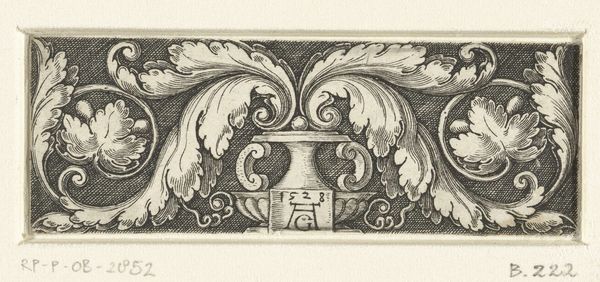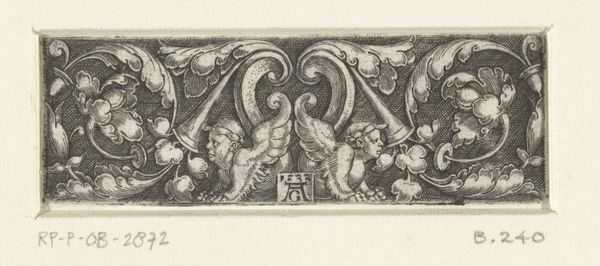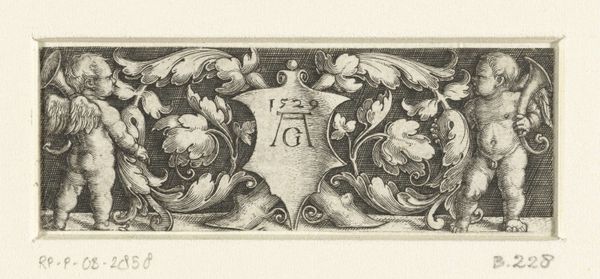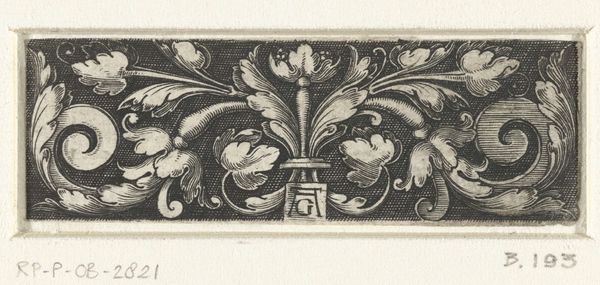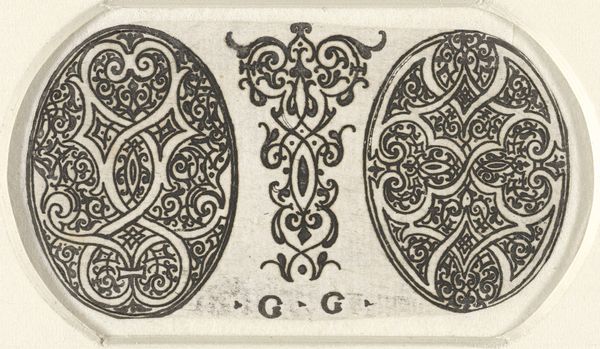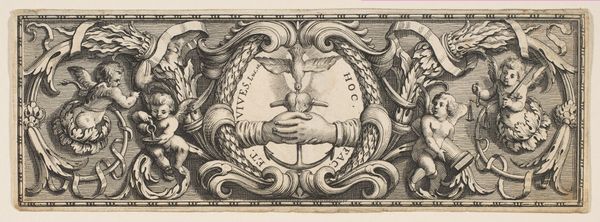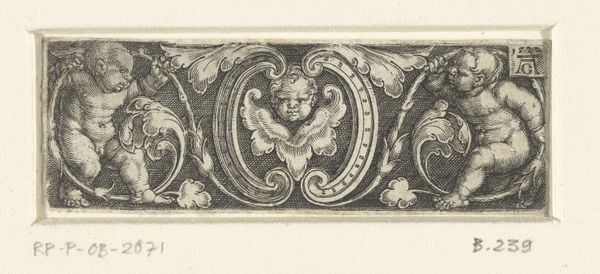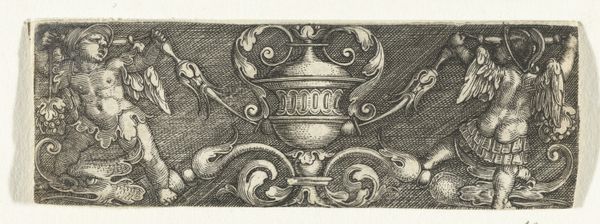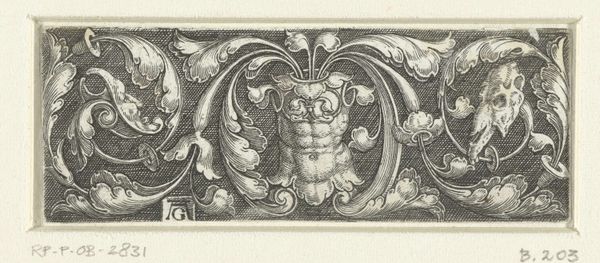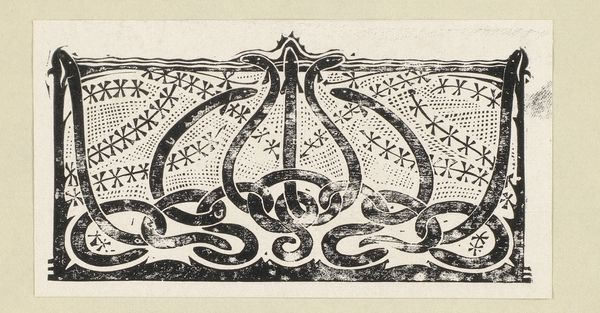
drawing, print, metal, engraving
#
drawing
#
pen drawing
# print
#
metal
#
geometric
#
line
#
engraving
Dimensions: height 16 mm, width 63 mm
Copyright: Rijks Museum: Open Domain
Editor: This is "Fries met twee dolfijnen en twee bladranken," or "Frieze with two dolphins and two leaf tendrils," created between 1512 and 1560 by Heinrich Aldegrever. It's a small engraving from the Rijksmuseum. I'm immediately struck by the almost playful symmetry of the dolphins and foliage. What deeper significance might we find in this ornamental design? Curator: It’s fascinating to consider this engraving within the context of the Northern Renaissance and the burgeoning print culture. How do you think the use of dolphins, often symbols of transformation and safe passage, speak to the social anxieties and shifting identities of the time? Editor: I hadn’t thought of it like that! Maybe the dolphins represented a hope for safe passage through social and political upheaval? What about the function of ornament itself during this period? Curator: Ornament in the Renaissance served multiple functions. It signified status and taste, certainly. But it was also deeply connected to the era’s rediscovery of classical forms and philosophies. Consider how Aldegrever is deploying these classical motifs – how does that reflect the era's attempts to reconcile pagan imagery with Christian beliefs? Editor: So it's not just decorative, it’s also about integrating a pre-Christian past into their present worldview? Curator: Exactly! And remember, prints like these were relatively affordable. They made classical imagery accessible to a broader audience, impacting design and thinking throughout society. The image of dolphins could be seen on furniture or used in the decoration of homes of people that were rising middle-class. In essence, they helped disseminate these new cultural ideals. How do you view its cultural impact given this wider accessibility? Editor: It gives me a lot to think about; the cultural implications far outweigh its decorative function. Thanks! Curator: Agreed. It highlights how a seemingly simple design element can hold complex cultural significance, reflecting larger shifts in worldview.
Comments
No comments
Be the first to comment and join the conversation on the ultimate creative platform.

